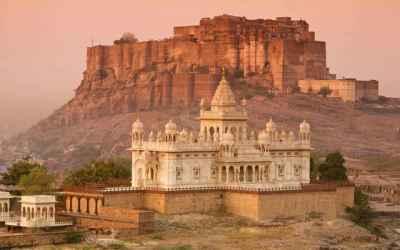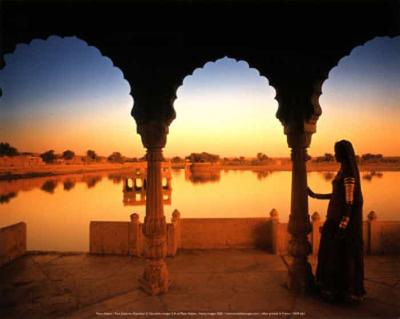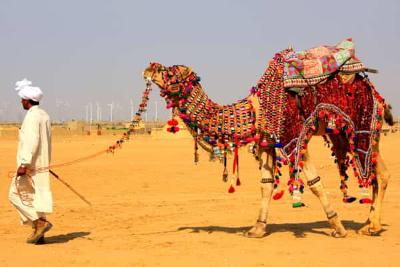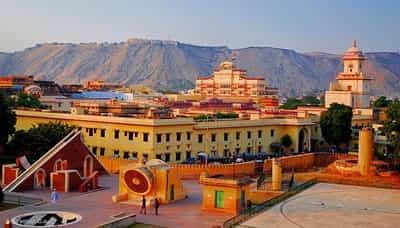Discovering the Legacy of Bhil Art in Rajasthan
Located in the northwestern part of India, Rajasthan is a land of rich culture and heritage. From majestic palaces to vibrant festivals, this state never fails to mesmerize its visitors. One aspect of Rajasthan's culture that often goes unnoticed is its indigenous art forms. Amongst these, the Bhil art stands out for its uniqueness and intricacy. In this blog post, we will delve into the legacy of Bhil art in Rajasthan and explore its significance in the state's cultural landscape.
The Bhil Tribe: Guardians of an Ancient Tradition
The Bhil tribe is one of the oldest indigenous communities in India, with a rich history that dates back thousands of years. They are primarily concentrated in the hilly regions of Rajasthan, Madhya Pradesh, Gujarat, and Maharashtra. The Bhil community has a deep connection with nature, and their art reflects this harmony with the natural world.
Traditionally, Bhil art was practiced by women of the community, who would decorate the walls of their homes with intricate designs. However, over the years, Bhil art has gained recognition and popularity beyond the confines of the tribe. Today, it is celebrated as a unique form of tribal art and has found its way into galleries and museums around the world.
The Aesthetics of Bhil Art
Bhil art is characterized by its vibrant colors, intricate patterns, and strong visual storytelling. The use of primary colors like red, yellow, and blue is dominant in their artwork. These colors are derived from natural sources such as minerals, vegetables, and even animal wastes.
The motifs and patterns in Bhil art depict various aspects of tribal life, mythology, and the natural world. Animals, birds, and trees are common subjects in their art, often representing the close relationship between humans and nature. The symmetry and precision in their designs showcase the skill and craftsmanship of the Bhil artisans.
Bhil Art Techniques
Bhil art employs various techniques to create stunning visuals. One of the most popular techniques is the "geru" or "geru-chhip" method. In this technique, a traditional red powder called geru is mixed with water to create a paste. The paste is then used to paint intricately designed patterns on the wall.
Another technique is the "jahwar" method, where Bhil artists carve out intricate patterns on wooden blocks. These blocks are then dipped in paint and pressed onto the surface to create beautiful designs. The use of wooden blocks allows for detailed and repetitive designs, giving Bhil art its unique charm.
Preserving the Legacy of Bhil Art
While Bhil art has gained popularity in recent years, there is still a need to preserve and promote this ancient art form. Many organizations and individuals are working towards empowering Bhil artisans and providing them with new avenues to showcase their talent.
One such initiative is the establishment of art cooperatives and galleries in tribal areas. These spaces not only provide a platform for Bhil artists to display their art but also offer them a fair and sustainable income. By supporting these cooperatives and galleries, travelers can contribute to the preservation of Bhil art and the empowerment of the Bhil community.
Experiencing Bhil Art in Rajasthan
For travelers visiting Rajasthan, there are several opportunities to experience Bhil art firsthand. Many cities and towns in the state have galleries and museums dedicated to tribal art, including Bhil art. These venues often host exhibitions, workshops, and cultural events that showcase the rich artistic heritage of the Bhil community.
Additionally, travelers can immerse themselves in the daily lives of Bhil artisans by visiting tribal villages. Here, they can witness the creation process of Bhil art, interact with the artists, and even purchase authentic artworks directly from the source. These interactions not only give travelers a deeper understanding of the art but also provide economic support to the Bhil community.
In conclusion,
Bhil art is not merely an art form; it is a glimpse into the rich cultural heritage of Rajasthan. By exploring Bhil art and supporting the Bhil community, travelers can contribute to the preservation of this ancient tradition. So, the next time you visit Rajasthan, make sure to delve into the legacy of Bhil art and discover the artistic wonders created by these talented artisans.
Don't forget to share this blog post with your friends and fellow travel enthusiasts!
Disclaimer : The information provided in this blog is for general informational purposes only. While we strive to keep the content accurate and updated, TravelSetu assumes no liability for errors or omissions. If you believe any part of this blog infringes your rights or causes concern, please notify us immediately at info[at]travelsetu[dot]com so that appropriate action can be taken.







